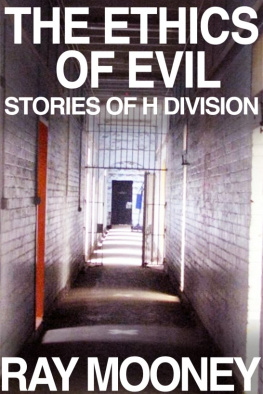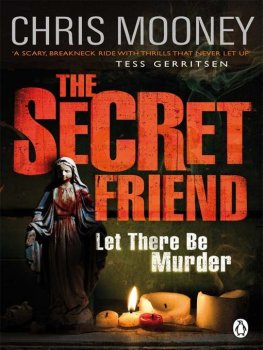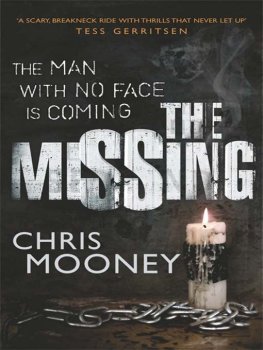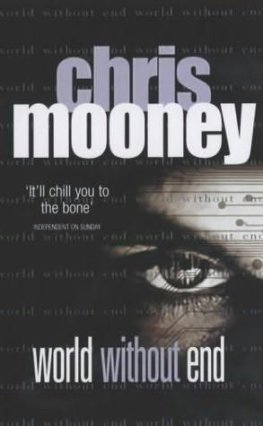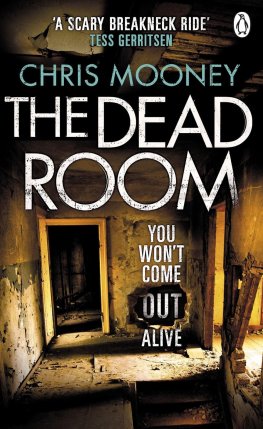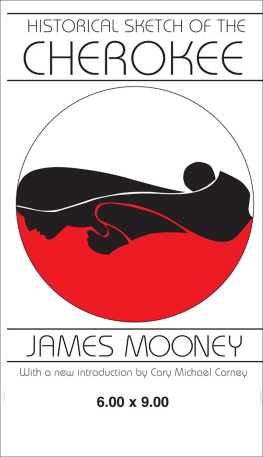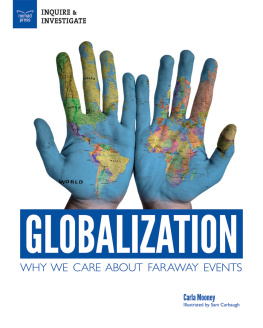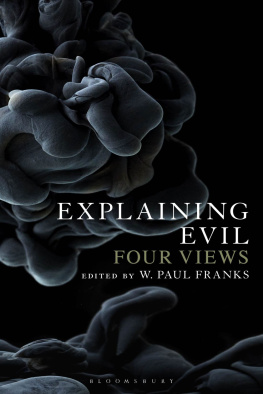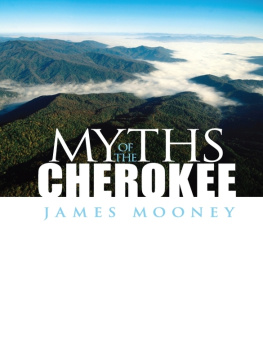Ray Mooney - The Ethics of Evil: Stories of H Division
Here you can read online Ray Mooney - The Ethics of Evil: Stories of H Division full text of the book (entire story) in english for free. Download pdf and epub, get meaning, cover and reviews about this ebook. year: 2016, publisher: Distributed via Smashwords, genre: Detective and thriller. Description of the work, (preface) as well as reviews are available. Best literature library LitArk.com created for fans of good reading and offers a wide selection of genres:
Romance novel
Science fiction
Adventure
Detective
Science
History
Home and family
Prose
Art
Politics
Computer
Non-fiction
Religion
Business
Children
Humor
Choose a favorite category and find really read worthwhile books. Enjoy immersion in the world of imagination, feel the emotions of the characters or learn something new for yourself, make an fascinating discovery.
- Book:The Ethics of Evil: Stories of H Division
- Author:
- Publisher:Distributed via Smashwords
- Genre:
- Year:2016
- Rating:4 / 5
- Favourites:Add to favourites
- Your mark:
- 80
- 1
- 2
- 3
- 4
- 5
The Ethics of Evil: Stories of H Division: summary, description and annotation
We offer to read an annotation, description, summary or preface (depends on what the author of the book "The Ethics of Evil: Stories of H Division" wrote himself). If you haven't found the necessary information about the book — write in the comments, we will try to find it.
The Ethics of Evil: Stories of H Division — read online for free the complete book (whole text) full work
Below is the text of the book, divided by pages. System saving the place of the last page read, allows you to conveniently read the book "The Ethics of Evil: Stories of H Division" online for free, without having to search again every time where you left off. Put a bookmark, and you can go to the page where you finished reading at any time.
Font size:
Interval:
Bookmark:
Dedicatedto:
The prisonerswho endured the struggle
Acknowledgments:
Heartfeltthanks to Eugene Donnini, Rupert Mann, Adrian Didlick, Julie VanKesteren, Teena Ross, Alex Miller, Alkinos Tsilimidos, WildeMooney, Autumn Mooney, Patricia Mooney, John Kerr, Julian Knight,Adam Shand, Don Osborne, Marty Ryan, Nick Barkla and AB Bishop fortheir creative support and encouragement.
SECTION 1
Introduction
My mother,Patricia Mooney, July 1973
The walk to HDivision is really something out of this world. Along the firstpart of it there are bearded irises planted singularly along thewall. They look so pathetic in a great long line. One poor littleflower broke the monotony. I thought that everybody knew thatirises had to be grouped into a mass to show off their beauty. Andbelieve me they can be beautiful but not in a straight line. Thenfurther along there are two bushes pruned to shape and on top ofthe poor things a cross has been shaped. It reminds me of acemetery, so depressing. And as you get closer to H the flowers andscrubs no longer exist. Its like going to no mans land. Just abit of dirt with nothing growing out of it. It looks so lonely
This book
Fiction andnon-fiction writers thrive on portraying criminals as cowards,idiots or immoral. Subtext for the criminal bully is they maskcowardice. Bank robbers who threaten staff and customers arecowards because they terrorise innocent people. Weve been weanedon criminals giving themselves up in the dying minutes oftelevision shows when the only incriminating evidence was suspicionfrom Inspector Heeler, so criminals must be stupid. Prisonsare populated with criminals whove been caught; if youre aprisoner youre an idiot for being caught. Its a given lawbreakersare immoral.
Nothing couldbe further from the truth. Many criminals and prisoners arecourageous, moral and intelligent, defining their existence byadherence to values and principles superior to the ethics ofcountless eminent people. There are cowardly, idiotic and immoralcriminals but those labels apply to all groups, includingreligious, judiciary and professionals. If I had to choose betweenputting my life into the hands of a principled criminal or acelebrated dubious cop Id choose the criminal everytime.
But too oftencriminals principles work against them. Take the principle ofnever giving anyone up. The criminal who never gives anyone up diesthe death of a thousand nightmares. They become victim to theruthless interrogator, the unprincipled associate and sometimestheir own stupidity when they choose to remain silentinstead of implicating the guilty. In short, the fair dinkum crimcan be their own worst enemy. Im guilty of stupidity. But Im alsoproud no one has served prison time because of anything Ive said.While thats caused me countless nightmares it has neverthelessguaranteed self-assured sleep.
The Ethicsof Evil is a book about one of those nightmares, the untoldstory of H Division, the punishment division within PentridgePrison. In 1973 I spent 4 months in H Division. My nightmare isrepresented by a non-linear jig-saw comprising my views on prisonculture, stories written by infamous criminals, quotes from prisonwriters, media reports and an analysis of the 1972 JenkinsonInquiry into brutality within Pentridge Prison which focused on HDivision. It includes personal accounts from prisoners subjected tobrutality in H Division. Their stories emphasise the viciousness ofviolent warders authorised and sanctioned at the highest level.
The JenkinsonInquiry, or government whitewash as it came to be known,established to examine ill-treatment of Pentridge prisoners between1970 and 1972, remains Australias greatest judicial travestybecause it exonerated prison administrators and warders who wereresponsible forturning bicycle thieves intomurderers, to quote Fr Brosnan, Pentridge chaplain. Thosebicycle thieves went on to commit many of Australias mostnefarious crimes.
That inquiry isdissected, giving access to previously unpublished documentsexposing a prison system as brutal, if not more brutal, than thelikes of Port Arthur, Devils Island and Guantanamo Bay at theirworst.
Wardersguilty of unlawful brutality in H Division neveracknowledged their liability in creating an alumni of offendersresponsible for a legacy of unimaginable crimes. To this day,warders and prison administrators deny there was unlawful brutalityin H Division, claiming accusations by prisoners were a conspiracyto darken their good name.
The notion ofgiving people up is at the heart of this book because prisonersrefusal to give warders up was the main reason H Division developeda culture of brutality that reigned unchecked between 1958 and1970. Only when prisoners decided to give them up did the systemchange. That decision by prisoners was a monumental shift in theirculture. This book documents that transformation.
Two personalstories to illustrate constant dilemma prisoners faced
Im 71. Threeyears ago I was hurrying up Swanston Street for an emergencydentist appointment. That morning a molar had snapped at the gumand my dentist moved heaven and hell for a 5 pm appointment. Ilugged an armful of student assignments and strode on the extremeleft to avoid approaching peak-hour pedestrians. A solidly-builtmale, I assumed in his early twenties, masked in hoodie, andaccompanied by two males, purposely veered into my path, forciblyclipping my shoulder. I realised it was intentional but keptwalking. An apologyld be fucking good! demandedaggressive Hoodie. I couldve pretended deafness and continuedbecause at 68 its no shame admitting youre incapable of taking onthe world. But it crossed my mind if this idiot was ice-affected,walking away might invite a shiv in the back. These days, bumpsomeone and youre apt to be slashed to pieces with a cutlass.
I turned.What? I enquired, feigning ignorance. Hoodie rolled hisshoulders like a young Rocky Balboa and hissed, You fuckenheard! I intended replying, You wont be getting anyapology from me! but before I got to wont hecharged. I couldnt tell if only Hoodie or three were charging.Thats another thing you lose with age, eye speed. Instinctively Ithrew a right. Sometimes theres magic in the mist. All weight wason my back foot allowing transfer through the punch that hit himflush in the mouth. He buckled but came up throwing haymakers. Iremember thinking he was trying to stab me. Assignments scatteredlike cut paper at a Royal wedding. An elderly woman bumped in thebrawl would meticulously collect them. I hit him again in the face.He spun away. I clasped his neck in a headlock, pulled him to thegutter. Unable to breathe, he relaxed, so I released my grip,turned him and pinned him on his back. He immediately kickedupwards with both feet, catching me the ribs. I grabbed him roundthe throat and said Id let go if he stopped kicking. Heferociously continued. A pain stabbed my heart. Im having aheart attack, I thought, imagining his buddies knifing me frombehind. I lifted him by the collar and body slammed him. His headwhiplashed into the gutter. Out cold, his eyes disappeared. Dead?He looked it. Blood seeped from his lifeless face.
A femalescreamed, pushing me aside. Get outa the way. Im a doctor. Getaway! Caught in the fear of having killed someone, I backed.His mates had bolted. Had I imagined them? We were 20 metres fromMelbourne East Police Station in Flinders Lane. When they arrivedshe was still working on him. I was ushered inside the policestation, no idea if Hoodie was dead or alive and politely led to aroom, told Id been arrested then left alone. A plain-clothes maleofficer entered. Whats your name? Ray Mooney,
Font size:
Interval:
Bookmark:
Similar books «The Ethics of Evil: Stories of H Division»
Look at similar books to The Ethics of Evil: Stories of H Division. We have selected literature similar in name and meaning in the hope of providing readers with more options to find new, interesting, not yet read works.
Discussion, reviews of the book The Ethics of Evil: Stories of H Division and just readers' own opinions. Leave your comments, write what you think about the work, its meaning or the main characters. Specify what exactly you liked and what you didn't like, and why you think so.

